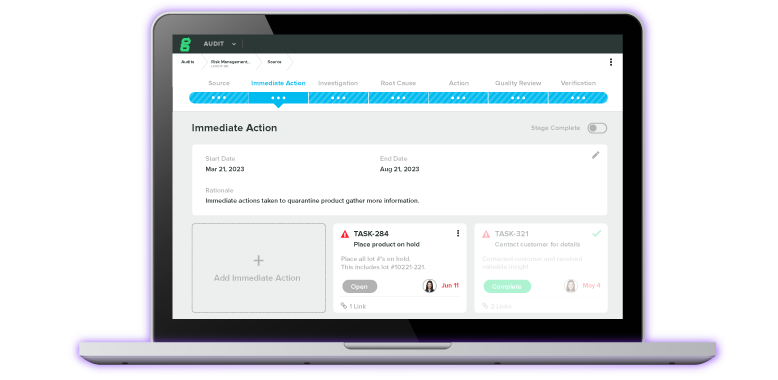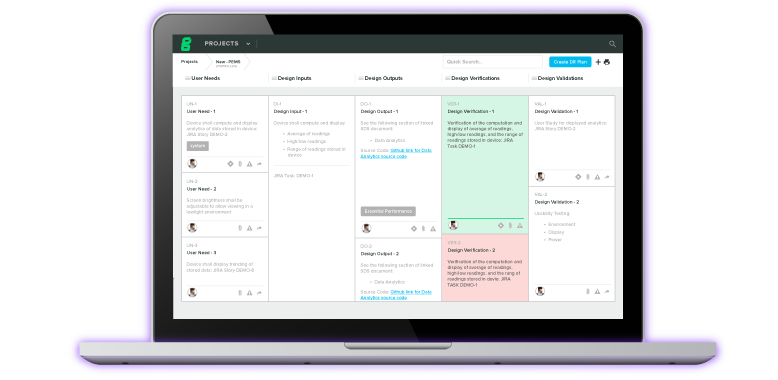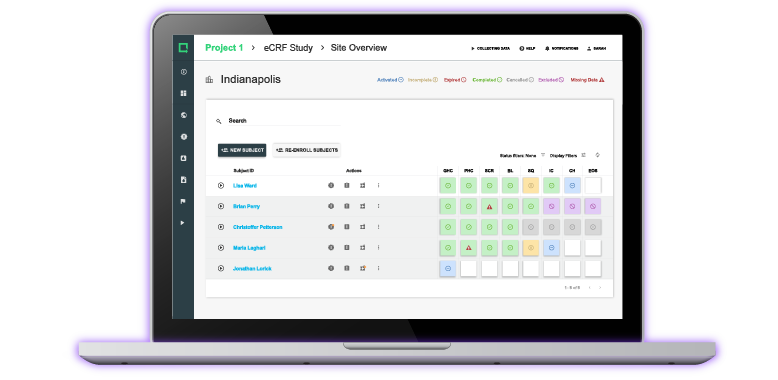How to Design an Electronic Case Report Form (eCRF) for Medical Device Studies
%20for%20Medical%20Device%20Studies%20-%20new.png)
In this post, we touch upon a few elements that can help you design a good Electronic Case Report Form (eCRF) when conducting clinical investigations for medical devices.
Over the years we have assisted numerous manufacturers in designing eCRFs, which has been the foundation for our seven principles behind a good eCRF.
Design Better Case Report Forms to Save Time and Reduce Costs
We know for a fact that clinical investigations with well-designed forms perform better, compared to those who attempt to copy their existing paper CRF design directly into an electronic CRF process.
Replacing existing paper-based CRF processes must be done with the additional capabilities of the eCRF in mind. If not, many of the challenges in paper-based CRFs will simply be transferred to the eCRF.
Additionally, utilizing best practice for eCRF design directly has a positive impact on compliance rates, data quality and communication between study participants. This will often lead to decreased time spent on data management, which results in reduced costs and eventually shorter time to market.
Medical Device studies are highly influenced by the sites’ clinical workflow. Human interactions with medical devices is one of the things that differentiates device studies from pharmaceuticals. To compensate for human factors, device studies need to collect a range of data points on the clinical workflow itself, to compensate and include those factors in the data analysis. This is to ensure that human factors can be taken into account when making assumptions on the data results.
For this reason, designing eCRFs and general data collection forms for clinical investigations, that ensure fast and effective data input during the clinical workflow, is crucial for device studies.
Use our eCRF guide to easily get your eCRF design right.
Paper CRF vs electronic CRF
Paper has some notable qualities which support its claim for the golden standard of data collection, but it does have several drawbacks. Drawbacks that can make the transition to an electronic case report form more desirable.
The move from a paper-based case report form (CRF) to an electronic case report form (eCRF) can be a challenge. This is due to the inherent differences between paper and the computer as CRF mediums.
As mentioned, the worst thing we can do is to simply copy the existing paper-based CRF directly into an eCRF format. Meaning, copying the design directly into the eCRF, making the two look identical and calling it a day.
Not All Forms are Paper-Based
Traditional CRFs are not always printed. People have been using Word, Excel, or other common digital solutions, as data collection methods. Such solutions have their drawbacks as well.
The 7 Principles behind a Good eCRF Design
We identify 7 principles behind a good eCRF design process and want to exemplify how you can apply them to your own case report form design.
Here are the first three principles behind a good eCRF design:
- Eliminate uncertainty
Make the questions explicit. Never ask 'If yes, check this box'. Create a Yes and No question to eliminate any uncertainty.
- Request data with required fields
Make use of a mandatory setting. With some eCRFs, you can require people to input data or answer questions. This can be useful to remind people to complete a field or to hinder subsequent data input. This can also eliminate deliberate or accidental missing data. Yet, forcing people to complete a field can be sketchy as well.
If data is not available, it can be difficult to force a person to input any value. Thus, allowing people to mark certain fields as 'missing' or 'not available' can be beneficial.
- Acquire more quantifiable and less irrelevant data
Avoid free-text questions and use pre-defined options instead. Free-text is difficult to quantify and requires data cleaning. You won't need to clean data if your forms are well-designed.
In most cases, a data collector, or a study coordinator already has an idea of the answers to expect. This knowledge should be utilized. One way is to use a multiple-choice question and define expected answers as possibilities. For cases where it's not applicable, one of the possibilities can be 'other' and you can use a text field to capture the applicable answer.
The remaining four principles behind a good eCRF design are:
-
Acquire more quantifiable and less irrelevant data
-
Be lazy
-
Set your limits
-
Simple is better
Final thoughts
It's important to note that these principles are not definite rules. They are a reference from our own experience working with medical device manufacturers and clinical research organizations.
Every study is different, and the complexity of data collection varies greatly from one to another.
However, keeping these principles in mind can help improve the overall efficiency, and lower costs of clinical operations - which leads to a shorter time to results.
With clinical investigations for Medical Devices as our sole focus for many years, we have developed an eCRF solution. Contact us to see for yourself.
Jón Ingi Bergsteinsson, M.Sc. in Biomedical Engineering, is the co-founder of Greenlight Guru Clinical (formerly SMART-TRIAL). He was also the technical founder of Greenlight Guru Clinical where he paved the way for the platform’s quality standards, data security, and compliance.
Read More Posts
10 Best Practices for eCRF in Medical Device Trials
FDA De Novo Pathway: Process Explained for Medical Device Companies
Tips for Success with IEC 60601 for Electrical Medical Devices
Get your free PDF
7 Principles to Designing an eCRF
.png?width=250&height=324&name=7%20Principles%20to%20Designing%20an%20eCRF%20(cover).png)










.png?width=1545&name=7%20Principles%20to%20Designing%20an%20eCRF%20(cover).png)